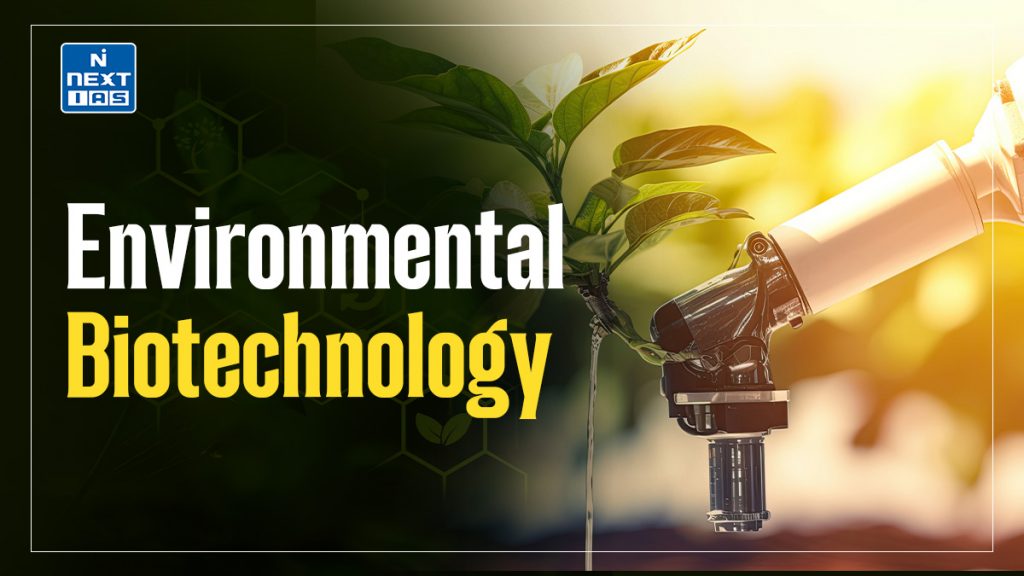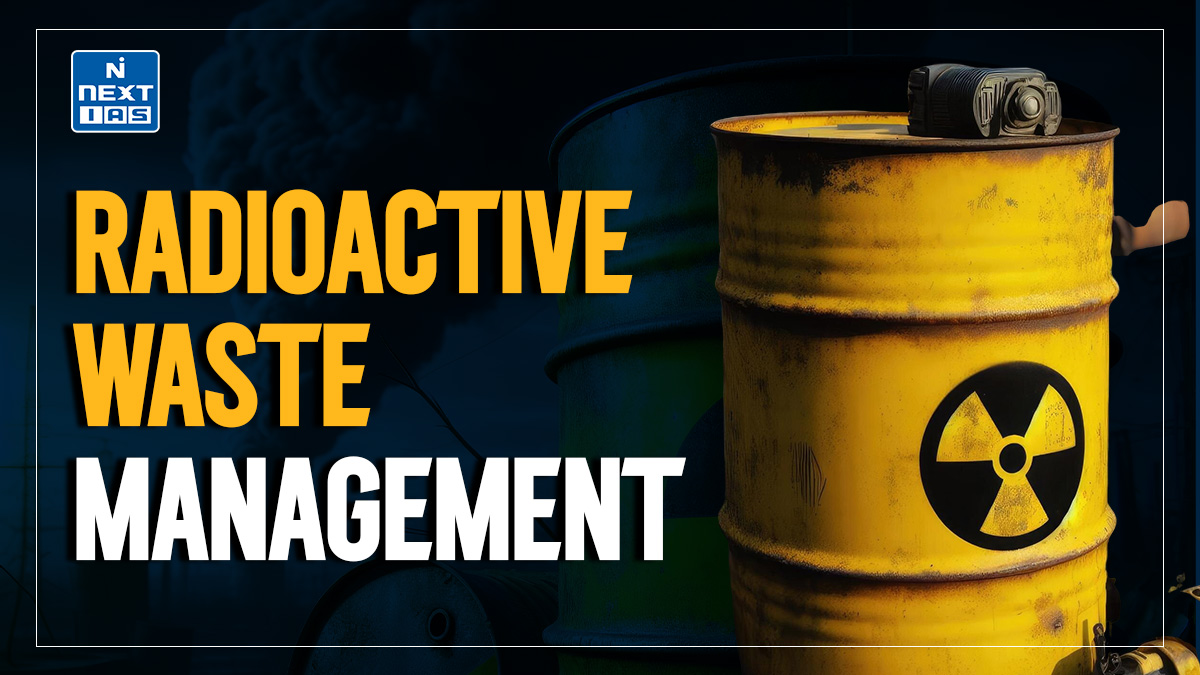
Environmental biotechnology applies biological systems to address environmental challenges. It focuses on waste management, pollution reduction, and developing eco-friendly technologies to promote sustainable development. This field leverages microorganisms and plants to treat contaminants, create biofuels, and recycle waste, helping to conserve resources while minimizing environmental impact.
What is Environmental Biotechnology?
- Environmental biotechnology uses biological processes and organisms to address environmental challenges and promote sustainability.
- It focuses on waste management through microbial treatment of sewage and hazardous waste, pollution control via bioremediation, and bioenergy production using organic waste to generate biofuels.
- Additionally, it supports the development of biodegradable materials and green chemicals.
- This field plays a crucial role in combating climate change, conserving resources, and fostering sustainable industrial and agricultural practices with minimal environmental impact.
Important Facts and Figures of Environment Biotechnology
Here are some key facts and figures about environmental biotechnology:
- Plastic Waste Management: More than 350 million tons of plastic waste are generated annually, driving innovation in bioplastics and microbial solutions for plastic degradation.
- Bioenergy: Research is focusing on biofuels and alternatives to lithium-ion batteries for sustainable energy production.
- Biomaterials and 3D Printing: Advancements include bioinks for organ printing and biodegradable polymers for medical implants.
- Global Focus: Environmental biotechnology aligns with efforts to mitigate climate change and improve recycling practices across sectors.
Advantages of Environmental Biotechnology
- Waste Management and Pollution Control
- It enables the treatment of industrial, agricultural, and municipal waste using microbes, reducing toxic pollutants in water, air, and soil through bioremediation techniques.
- Bioenergy Production
- Environmental biotechnology supports the generation of renewable energy like biofuels from organic waste, contributing to sustainable energy solutions.
- Eco-friendly Alternatives
- The field promotes biodegradable products and green chemicals, reducing reliance on harmful substances and minimizing environmental damage.
- Resource Conservation
- Processes like bio-leaching recover valuable metals from waste, helping conserve natural resources and reduce mining activities.
- Climate Change Mitigation
- Biotechnology-based carbon sequestration and cleaner production methods lower greenhouse gas emissions, playing a role in combating climate change.
- Circular Economy Promotion
- By recycling waste into useful products, it supports a circular economy, encouraging sustainable production and consumption practices.
These advantages make environmental biotechnology essential for sustainable development across industries, agriculture, and urban infrastructure.
Read our detailed article on Waste Management: Facts, Challenges & Solutions
Disadvantages of Environmental Biotechnology
- High Costs: Developing and maintaining biotechnological systems, such as bioreactors or large-scale bioremediation projects, can be expensive. This limits accessibility for some industries and regions.
- Slow Processes: Biological treatments, like bioremediation, often take longer to show results compared to chemical or mechanical methods, making them less practical for urgent interventions.
- Limited Effectiveness: Microbial solutions may not work efficiently in environments with extreme conditions (e.g., high toxicity or temperature), limiting their applicability.
- Risk of Secondary Pollution: If not properly managed, genetically modified organisms (GMOs) or by-products from biological processes could introduce new pollutants or disrupt local ecosystems.
- Regulatory and Ethical Concerns: Biotechnology involving GMOs faces regulatory hurdles and public opposition due to concerns about biosafety and potential ecological impacts.
These challenges highlight the need for careful planning, monitoring, and regulation to fully harness the potential of environmental biotechnology.
Recent Environmental Biotechnological Tool
Recent tools in environmental biotechnology focus on enhancing sustainability and environmental protection. Key developments include:
- Nanobiotechnology: Using nanoparticles to remove pollutants from air, water, and soil more effectively than traditional methods.
- Bioinformatics: Leveraging AI to analyze large datasets for better environmental monitoring.
- Synthetic Biology: Engineering microbes for pollution remediation and biofuel production.
- CRISPR: Editing microbial genomes to improve bioremediation capabilities and create eco-friendly chemicals.
These innovations contribute to cleaner ecosystems and sustainable industrial processes.
Read our detailed article on CRISPR-Cas9: Working, Application & Future Potential
Way Forward
Environmental biotechnology involves improving research and innovation to create cost-effective, scalable solutions. Promoting collaborations between governments, industries, and research institutions can accelerate breakthroughs. Policymakers must develop robust frameworks for ethical use and biosafety. Raising public awareness and investing in eco-friendly technologies will foster sustainable growth while addressing climate challenges effectively.
Conclusion
Environmental biotechnology offers innovative solutions to tackle environmental challenges, such as pollution control, waste management, and sustainable energy production. It plays a crucial role in conserving natural resources and promoting a circular economy. However, to fully harness its potential, careful planning, public engagement, and regulatory frameworks are essential to address challenges like high costs, slow processes, and biosafety concerns. With continuous advancements, this field holds promise for a greener and more sustainable future.
Frequently Asked Questions (FAQs)
Who is the father of environmental biotechnology?
Dr. Ernest L. Drew is often regarded as the “father of environmental biotechnology” for his pioneering work in using biological processes to treat waste and pollutants. His research laid the foundation for the field, focusing on sustainable environmental management and the development of biotechnological solutions for pollution control and waste management.
What is the scope of environmental biotechnology?
Environmental biotechnology offers solutions for pollution control, waste management, and resource conservation. It uses biological processes to treat contaminated environments, produce biofuels, and develop sustainable agricultural practices. Its scope includes bioremediation, wastewater treatment, renewable energy production, and eco-friendly industrial processes, promoting sustainable environmental and resource management.
What is the role of environmental biotechnology in pollution control?
Environmental biotechnology plays a vital role in pollution control by using microorganisms and plants to degrade or remove contaminants from air, water, and soil. Techniques like bioremediation, biofiltration, and phytoremediation target pollutants, transforming them into less harmful substances, thereby offering efficient, eco-friendly solutions for environmental cleanup.
What is the role of biotechnology in bioremediation?
Biotechnology enhances bioremediation by engineering microorganisms to break down pollutants in soil, water, and air. It optimizes microbial strains and enzymes for targeted contaminant degradation, speeding up natural processes. This approach effectively removes toxins like heavy metals, hydrocarbons, and pesticides, offering a sustainable method for environmental cleanup.
What is the role of environmental biotechnology in waste water treatment?
Environmental biotechnology improves wastewater treatment by using microorganisms to break down organic pollutants, converting them into harmless byproducts. Processes like activated sludge, biofilm reactors, and anaerobic digestion efficiently remove contaminants, reduce sludge production, and recover valuable resources, promoting sustainable and eco-friendly water treatment solutions.





